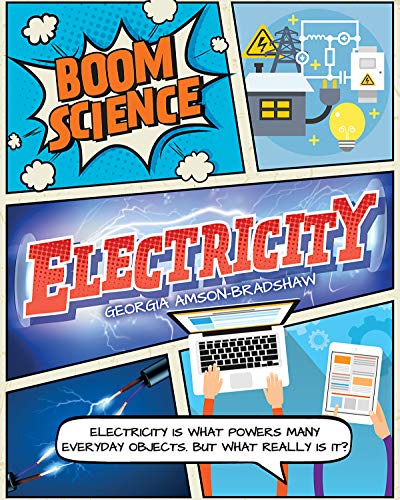-
Plants
Georgia Amson-Bradshaw
Library Binding (PowerKids Press, July 15, 2019)Botany is a vital branch of science. A world without plants would be a world without delicious foods, beautiful flowers, and the durable materials that make up our homes, and of course, our oxygen would be depleted. The engaging text of this noteworthy volume will appeal to scientists and comic-book lovers alike. Eye-catching designs draw the reader to important curricular content while colorful cartoons both teach and amuse. Readers can answer quiz questions to evaluate their understanding of the essential subject matter. Q
Q
-
What Kind of Sound?
Vita Jiménez
Library Binding (Capstone Press, Jan. 1, 2006)Text and photos present different sounds. B
B
-
Destination Mars: The Story of Our Quest to Conquer the Red Planet
Andrew May
Paperback (Icon Books, Sept. 12, 2017)Mars is back. Suddenly everyone – from Elon Musk to Ridley Scott to Donald Trump – is talking about going to the Red Planet.When the Apollo astronauts walked on the Moon in 1969, many people imagined Mars would be next. However, NASA’s Viking 1, which landed in 1976, was just a robot. The much-anticipated crewed mission failed to materialise, defeated by a combination of technological and political challenges.Four decades after Viking and almost half a century after Apollo, technology has improved beyond recognition – and politics has changed just as much. As private ventures like SpaceX seize centre stage from NASA, Mars has undergone a seismic shift – no longer just about science, it’s become the prime destination for future human expansion and colonisation.But what’s it really like on Mars, and why should anyone want to go there? How do you get there and what are the risks? Astrophysicist and science writer Andrew May answers all these questions and more, as he traces the history of our fascination with the Red Planet.
-
Earth Science
Ralph M. Feather, Susan Leach Snyder, Dinah Zike
Hardcover (Glencoe/McGraw-Hill School Pub, July 16, 2004)Earth Science provides students with accurate and comprehensive coverage of Earth and space science. The strong content coverage integrates a wide range of hands-on experiences, critical thinking opportunities, and real-world applications. This is part of a three-book series along with Life Science and Introduction to Physical Science.
-
Animal Group Behavior
Abbie Dunne
Paperback (Capstone Press, Aug. 1, 2016)Simple text and bright photographs explain the concept of animal group behavior for beginning readers. The book concludes with a simple, kid-friendly activity. L
L
-
Our Five Senses
Ellen Catala
Library Binding (Capstone Press, Jan. 1, 2003)Catala, Ellen J
J
-
Super Science: Feel the Force!: Full of Pop-Up Physics Fun
Tom Adams, Thomas Flintham
Hardcover (Templar, Sept. 13, 2011)Discover how exciting physics can be in this fun and interactive book!The first in a series about science, Feel the Force!, puts the "fizz" into physics. Readers will explore how things move, friction, gravity, light, sound, magnetism, and electricity, among other key areas of physics. Packed with hands-on paper novelties and a range of simple experiments, this is the perfect book to make science fascinating and fun. N
N
-
All Kinds of Habitats
Sally Hewitt
Paperback (Childrens Pr, Sept. 1, 1999)Explores different kinds of environments that are homes to various animals and plants and examines why living organisms live where they do D
D
-
Glencoe Earth & Space iScience, Grade 6, Reading Essentials
McGraw-Hill
Paperback (McGraw-Hill Education, June 1, 2011)Reading Essentials, student edition provides an interactive reading experience to improve student comprehension of science content. It makes lesson content more accessible to struggling students and supports goals for differentiated instruction. Students can highlight text and take notes right in the book! W
W
-
Electricity
Georgia Amson-Bradshaw
Paperback (PowerKids Press, July 15, 2019)Electricity can seem like a mysterious force. We often don't even think about it, until the power goes off. This valuable volume allows young scientists to explore the energy we call electricity and understand how humans have harnessed it to power our homes and devices today. Essential information is explained in an accessible and entertaining comic-book design. Beneficial diagrams further enable readers to comprehend key concepts and quiz questions allow for self-assessment. S
S
-
Living or Nonliving?
Abbie Dunne
Library Binding (Capstone Press, Aug. 1, 2016)Simple text and bright photographs explain the concept of living and nonliving things for beginning readers. The book concludes with a simple, kid-friendly activity. M
M
